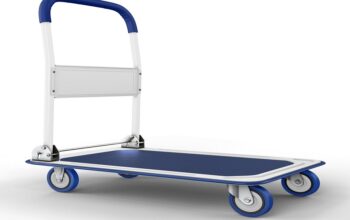CNC machines are one of the most powerful machines for aerospace workflows. They provide the power and precision required for 3D laser cutting, milling, and drilling. To fully harness their potential, it is important to understand the specific features that make them a powerful tool in aerospace manufacturing:
1) Accuracy
Aerospace-grade CNC machines are designed to offer high accuracy in several different ways. Experts in an Aerospace machine shop can fit them with a repeatable, robust linear guide system or an accurate rotary encoder that ensures the machine is running the correct path every time. These accuracy systems provide that parts can be made reliably and consistently to tight tolerances.
2) Repeatability
The critical feature of aerospace CNC or CNC cutting machines is consistently producing parts with high precision. Experts can achieve this by using traditional mechanical means like linear guiding systems or electronic means like rotary encoders. Interference-free CNC tools can also deliver repeatability, helping to produce high-quality components and assemblies.
3) Precision
Precision refers to the fit between parts in an assembly – whether they are moving as they should be or not. Pressures are used to measure the force of the part holding itself in place, and magnitudes of precision can be calculated from measurement results. Precision is especially important when working with CNC because close tolerances allow for more accurate models and better-fitting parts. For instance, you will want a machine with high accuracy when making small parts that require a large number of steps to create a complex shape.
4) Tool paths
For an aerospace CNC machine to be effective, it must be able to produce accurate, repeatable parts. However, for a machine to produce accurate parts, it must know how to make each part. Toolpaths are the tool’s path of travel through the part. These paths are created by coordinating multiple CNC operations – such as tool rotations and movements – into one piece of data. Aerospace CNC machines can produce an extremely large variety of toolpaths, but all have one underlying principle: they are all made of simple commands.
5) Programming
CNC machines must be programmed to understand the specifications and goals of the operator, so the machine can best perform each operation. This programming is done through a familiar programming language, commonly referred to as G-code. One key aspect of this language is that it breaks tasks into small parts and provides instructions for each part’s movement. This simplifies the work, making it easier for machines to understand and follow.
6) Safety
All aerospace companies take safety seriously, so they must ensure that their machining operations are safe as well. One way to do this is by using an HMI (human-machine interface). Using an HMI can reduce or prevent human error and improve productivity.
Aerospace parts and assemblies are typically larger and more complex, requiring unique machining needs. A CNC machine’s accuracy, repeatability, precision of speed, toolpaths, and programming capabilities can all be improved by using a feature-packed machine. When choosing a machine for your aerospace needs, consider the features outlined above to ensure that you select the best one for your particular application.




